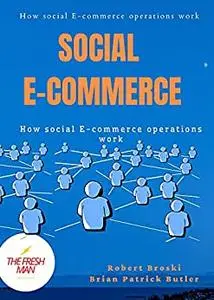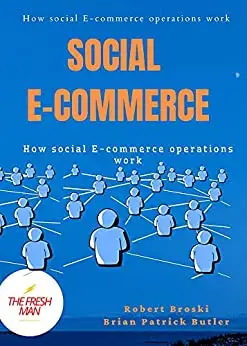Social E-Commerce : How social E-commerce operations works by Robert BroskI
English | 2019 | ISBN: N/A | ASIN: B09D53XP6T | 165 pages | EPUB | 0.43 Mb
English | 2019 | ISBN: N/A | ASIN: B09D53XP6T | 165 pages | EPUB | 0.43 Mb
Chapter 1 focuses on the development environment, status, and trend of social e-commerce in the new retail era. It is hoped that readers can fully understand the status quo, gain insight into the changes and trends, and their own position, focus on the layout of key nodes, and always walk in The industry's outlet, thus getting twice the result with half the effort.
The “display” that Chapter 2 focuses on refers to the shop display screen and display style that the user first sees after entering the store. After users are interested in the brand and products, it is possible to learn more. This is equivalent to selling things off line. First of all, there must be a store. The decoration of the store will attract fans, build trust, and directly affect customers' desire to buy and stay time.
Chapter 3 will explain the promotion of the trilogy—promoting product positioning, collecting channel existing traf ic, and expanding internal and external traf ic. It will also explain Fengchao Express Cabinet, Happy Cakes, Forbidden City Cultural Jewelry, Oreos, and Chengdu Royal Palace. Analyze the successful promotion cases of Jing, Xianfeng Fruit, Universal Hot Mom, Multiday Sweetheart, Banna Tiantian Fruit, and Afu Tesco.
Chapter 4 aims to arouse readers’ attention to interaction and explain in detail the eight practical interaction methods of content interaction, column interaction, survey interaction, game interaction, personal WeChat account interaction, customer service interaction, of line activities, and point interaction. I Hope Readers master the core of interactive operations and become excellent operational talents.
Chapter 5 aims to allow readers to master the retained operating cores and become excellent operating talents by focusing on retention tips in automatic response, sign-in retention, content retention, fixed columns, member retention systems, community retention systems, and points systems.
Chapter 6 focuses on explaining the five elements that affect transactions, commodity transaction strategies, transaction formula upgrades, and nine ways to promote transactions and strive to build a complete transaction system for readers.
Chapter 7 focuses on solving the problem of how to improve the repurchase rate, such as how to find key users and follow up through the tool-RFM data analysis, and how to use the points system, package sales, member storage, directional coupon issuance, and other activities to make old people. Users continue to bring orders and so on.
Chapter 8 focuses on analyzing the importance of the positioning of the official account, exploring how to perceive and expand user needs, and analyze how to continuously produce high-quality content from multiple perspectives such as topic selection, copywriting design, and article layout.
Chapter 9 introduces some basic elements of user operation and how to build a user operating system to produce a good user operation effect.
Chapter 10 mainly explains how to make a complete and implementable event planning program.
Feel Free to contact me for book requests, informations or feedbacks.
Without You And Your Support We Can’t Continue
Thanks For Buying Premium From My Links For Support
Without You And Your Support We Can’t Continue
Thanks For Buying Premium From My Links For Support



